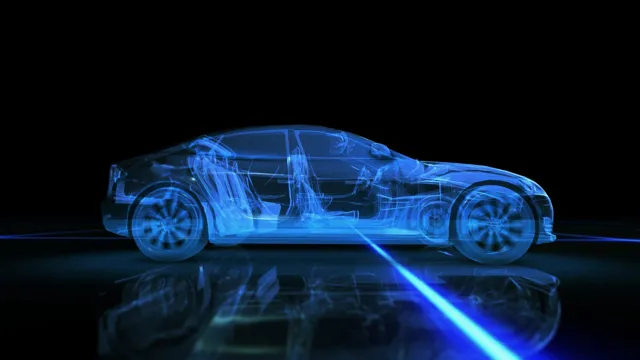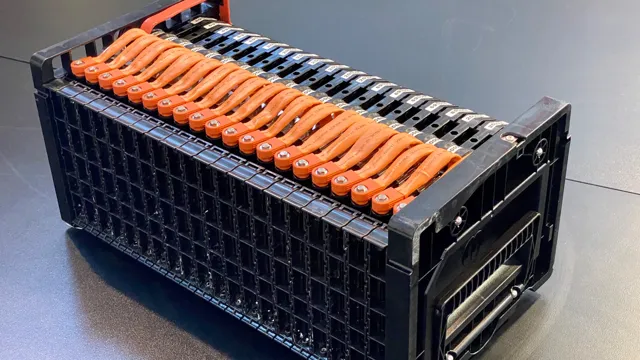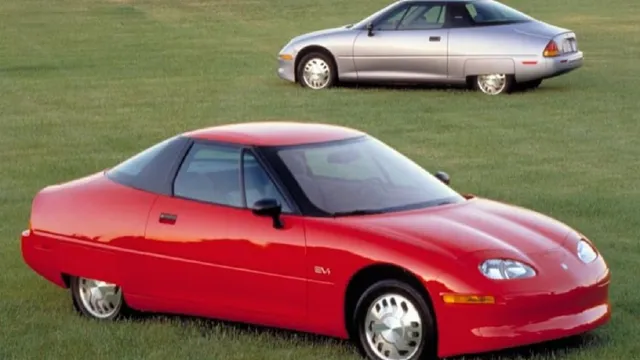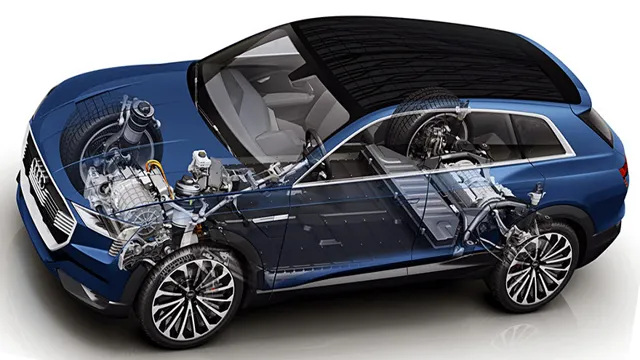Revving Up the Future: Unveiling the Technology Behind Electric Cars
Electric cars have disrupted the automobile industry, with more and more people buying them every year. However, it’s not just the lack of fuel consumption that makes electric cars so popular. There’s a lot of tech behind electric cars that makes them unique, efficient, and practical.
From their electric motors and battery packs to regenerative braking and charging stations, electric cars are truly the epitome of modern innovation. In this blog post, we’ll take a deep dive into the tech behind electric cars that makes them so impressive and eco-friendly. So strap in and get ready to learn about the inner workings of electric cars!
Electric Motors
Electric cars are a revolutionary new mode of transportation that have been gaining popularity in recent years due to their environmentally friendly nature. The technology behind electric cars is constantly evolving, but at the core of these vehicles lies the electric motor. Unlike traditional internal combustion engines, electric motors run on electricity that is stored in a battery and converted into motion.
This means that electric cars produce zero emissions and are much more energy-efficient than their gas-powered counterparts. The electric motor is also much simpler in design, with fewer moving parts, which means less maintenance and a longer lifespan. With advances in battery technology and charging infrastructure, electric cars are becoming more practical for everyday use.
So, the next time you see an electric car whizzing by on the road, you can appreciate the cutting-edge technology that makes it possible.
Permanent Magnet Motor vs. AC Induction Motor
Electric Motors When it comes to electric motors, there are two main types: permanent magnet motors and AC induction motors. Both work by producing a magnetic field that causes the motor to rotate. The difference lies in how those magnetic fields are created.
In a permanent magnet motor, the field is created by a permanent magnet, while in an AC induction motor, it is created by an alternating current flowing through a coil. One advantage of permanent magnet motors is that they are more energy efficient than AC induction motors, which means they require less electricity to produce the same amount of power. However, AC induction motors are generally less expensive to produce, which makes them a more cost-effective choice for many applications.
Another advantage of permanent magnet motors is that they can provide a higher torque, which makes them a good choice for applications that require a lot of power. However, they are also more difficult to control, so they may not be the best choice for applications that require precise speed control. AC induction motors, on the other hand, are relatively easy to control and can provide a more consistent speed.
Overall, the choice between a permanent magnet motor and an AC induction motor will depend on the specific application. Both types have their own advantages and disadvantages, so it’s important to carefully consider the requirements of the application before making a decision.
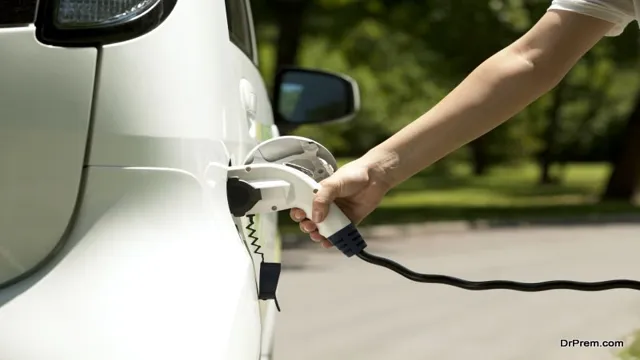
How Electric Motors Work
Electric motors are ubiquitous in our daily lives, powering everything from household appliances to industrial machinery. But how do they actually work? In simple terms, electric motors convert electrical energy into mechanical energy to create motion or force. This is done through a combination of electromagnetic fields and interactions with permanent magnets.
When electricity flows through the motor’s coils, it creates a magnetic field that interacts with the magnetic field of the permanent magnets, resulting in rotational force that drives the motor. The speed and direction of the motor can be controlled by varying the electrical current, allowing for precise manipulation of the machine’s output. Electric motors are incredibly efficient, reliable, and versatile, making them an essential component of modern technology.
Whether you’re using a blender in your kitchen or powering a manufacturing plant, electric motors are the unsung heroes that keep our world turning.
Batteries
Electric cars are powered by rechargeable batteries. The technology behind these batteries is complex but fascinating. Most electric cars use lithium-ion batteries, which are known for their high energy density and long-lasting performance.
These batteries are made up of several cells that work together to store and release energy. When an electric car is plugged in to charge, the batteries take in electrical energy, which is stored chemically in the cells. When the car is in use, the batteries release the stored energy as electricity to power the motor.
This process is much cleaner and more efficient than traditional gasoline combustion engines. In addition, electric car batteries can be charged using renewable energy sources like wind or solar power, making them even more sustainable. The technology behind electric car batteries is constantly evolving, with new materials and designs being developed to increase energy density and reduce costs.
As a result, electric cars are quickly becoming a viable and sustainable alternative to traditional gasoline-powered vehicles.
Types of Batteries for Electric Cars
Batteries are essential components of electric cars and come in various types. Lithium-ion batteries are the most common type used since they are lightweight and efficient in storing and discharging energy, which maximizes the car’s performance. Nickel-Metal hydride batteries are less efficient than lithium-ion batteries but are still used in some hybrid cars due to their durability and low cost.
Solid-state batteries are a newer type of battery that promise to be safer, more efficient, and have a higher energy density than any other type of battery. However, they are not yet readily available and still need more development before being used in mass production. Ultimately, the choice of battery for an electric car depends on several factors such as range, cost, and durability.
Therefore, electric car manufacturers will continue to research and develop new and improved battery types to enhance the features of electric cars.
Battery Lifespan and Range
When it comes to electric vehicles, one of the primary concerns is battery lifespan and range. The battery is the heart of the electric car, so ensuring its lifespan is crucial to get the most out of the vehicle. The lifespan of a battery is affected by factors such as how often it is charged and discharged, temperature, and usage patterns.
These factors can cause the battery to degrade over time. However, advancements in technology have led to the development of batteries that are designed to last longer and offer greater range. For instance, Tesla’s Model S has a range of over 400 miles, thanks to its innovative battery technology.
With continued research and development, we can expect even more efficient batteries that offer longer ranges and last longer, making electric vehicles an even more attractive option for environmentally-conscious drivers.
Battery Charging
When it comes to battery charging, there are a few things you should keep in mind to ensure your batteries are charged properly and last as long as possible. First, it’s important to use the right charger for your battery, as different types of batteries require different charging rates and voltages. Always make sure you’re using a charger with the right output for your battery to prevent overcharging or undercharging, which can damage the battery and reduce its lifespan.
Additionally, it’s a good idea to wait until your battery is almost fully discharged before charging it, as this can help prevent a phenomenon called “memory effect,” where the battery starts to lose capacity over time. Finally, if you’re storing your battery for an extended period of time, it’s best to store it at a partial charge rather than fully charged or fully discharged, as this can help prevent damage and extend its overall lifespan. By following these simple tips, you can help ensure your batteries are always charged properly and last as long as possible.
Regenerative Braking
Regenerative braking is a technology behind many electric cars that has revolutionized the way we think about energy efficiency in transportation. Essentially, this feature allows the car to capture some of the energy that would normally be lost during the process of braking and convert it into usable energy. Instead of just dissipating heat and friction, the electric motor is able to use that energy to charge the car’s battery.
This means that electric cars can travel much further on a single charge than gas-powered cars can on a tank of fuel. It also means that electric cars are more environmentally friendly since they are able to recycle energy that would otherwise be wasted. Overall, regenerative braking is a great example of how innovation in the automotive industry can lead to more sustainable and efficient solutions for transportation.
How Regenerative Braking Works
Regenerative braking is a type of braking system that harnesses the kinetic energy produced during a vehicle’s deceleration to recharge the battery. This technology is commonly seen in hybrid and electric vehicles, but it is also being used in some traditional gas-powered cars. Rather than dissipating the energy as heat, regenerative braking captures and stores it for future use.
When the brakes are applied, the vehicle’s electric motor runs in reverse, converting the kinetic energy into electrical energy that is used to recharge the battery. This not only improves the vehicle’s overall efficiency but also increases the lifespan of the brake pads. In a sense, regenerative braking is like recycling the vehicle’s energy, providing a cost-effective and environmentally-friendly solution for braking.
Benefits of Regenerative Braking
Regenerative braking is a technology that has been widely adopted in modern electric vehicles. Essentially, when the vehicle brakes, the energy that would have been lost as heat in traditional braking systems is instead stored in the battery for later use. This means that the vehicle is more energy-efficient, with less wasted energy and less power needed from the battery to get moving again.
The benefits of regenerative braking are twofold: firstly, it reduces the overall energy consumption of the vehicle, which is great for the environment and for the owner’s wallet. Secondly, it can help to extend the range of the vehicle, as the stored energy can be used to power the vehicle for short distances without drawing on the battery. Overall, regenerative braking is a great example of how technology can be used to make vehicles more energy-efficient, reducing carbon emissions and helping to build a more sustainable future.
Power Electronics
Electric cars are powered by a technology called power electronics. This technology involves the use of advanced electronic circuitry to convert the high-voltage direct current (DC) stored in the car’s battery to alternating current (AC), which can then be used to drive the car’s electric motor. In addition to this, power electronics also help to manage the flow of electricity from the battery to the motor, as well as regulate the charging of the battery.
This makes electric cars highly efficient, with a much lower energy loss during conversion compared to gasoline-powered cars. While the technology behind electric cars is complex, it is essential for reducing our dependence on fossil fuels and creating a more sustainable future for the transportation industry. By investing in power electronics technology, we can make the switch to clean energy vehicles that are both environmentally friendly and cost-effective in the long run.
Conclusion
In conclusion, the technology behind electric cars can be summed up in one word: electrifying! Electric cars harness the power of electricity to propel the vehicle forward and reduce emissions. From the advanced batteries that store the energy to the powerful electric motors that convert it into motion, every aspect of electric car technology is designed to make driving cleaner, greener, and more efficient. Whether you’re a fan of futuristic, cutting-edge technology or simply looking for a way to reduce your carbon footprint, electric cars are the way to go.
So why not join the electric revolution and experience the thrill of the ride for yourself?”
FAQs
What is the main technology behind electric cars?
The main technology behind electric cars is the electric motor powered by rechargeable battery packs.
How do electric cars differ from conventional gasoline-powered cars?
Electric cars don’t have an internal combustion engine and use an electric motor instead. They also don’t produce harmful emissions like traditional cars and are much quieter.
What kind of battery technology is used in electric cars?
Lithium-ion batteries are commonly used in electric cars due to their high energy density and long battery life.
How long does it take to charge an electric car battery from empty to full?
It depends on the battery size and charging method. Level 1 charging (using a standard outlet) can take up to 20 hours while Level 2 charging (using a charging station) can take around 4-6 hours. DC fast charging can charge up to 80% in 30 minutes.
